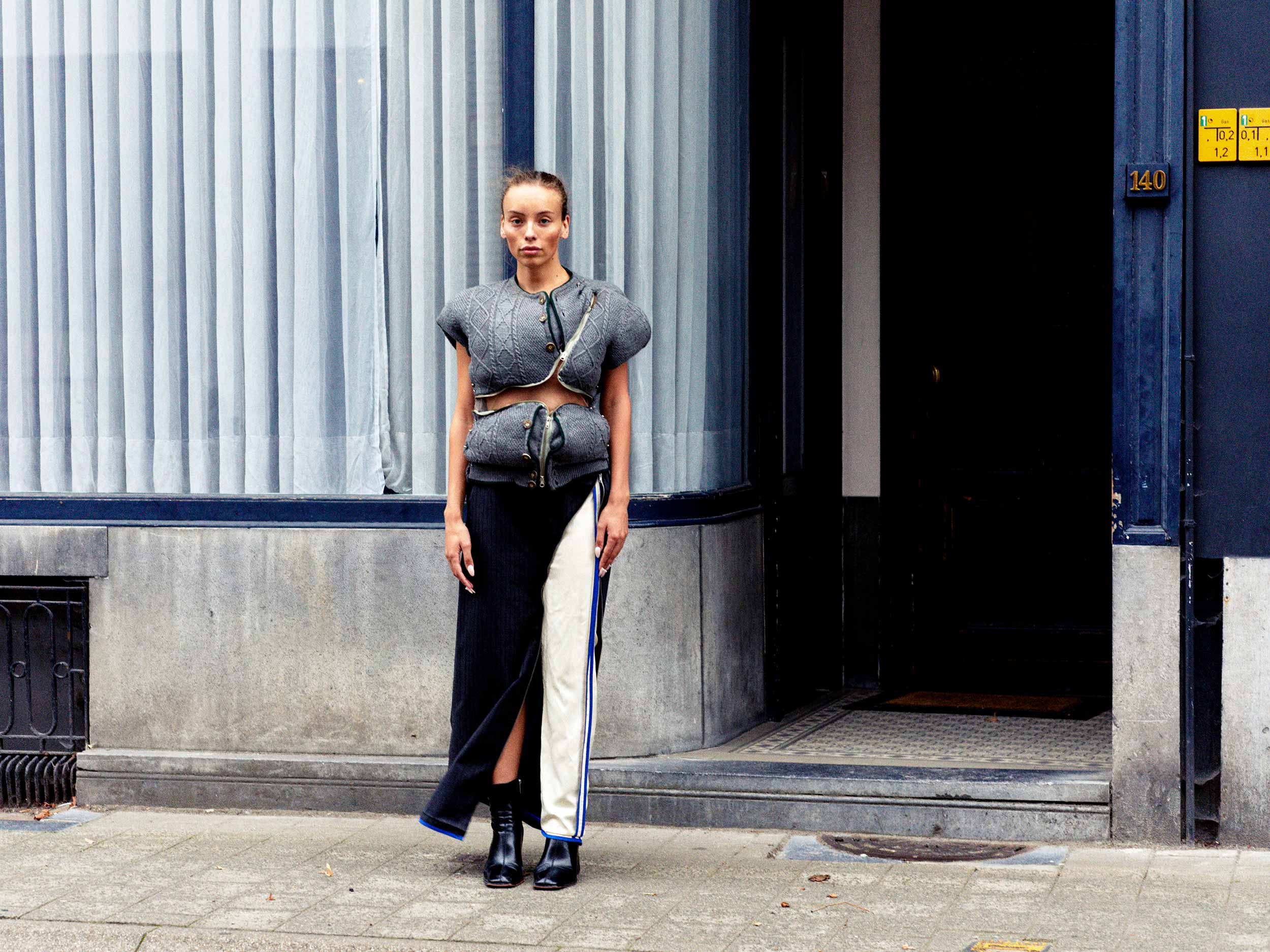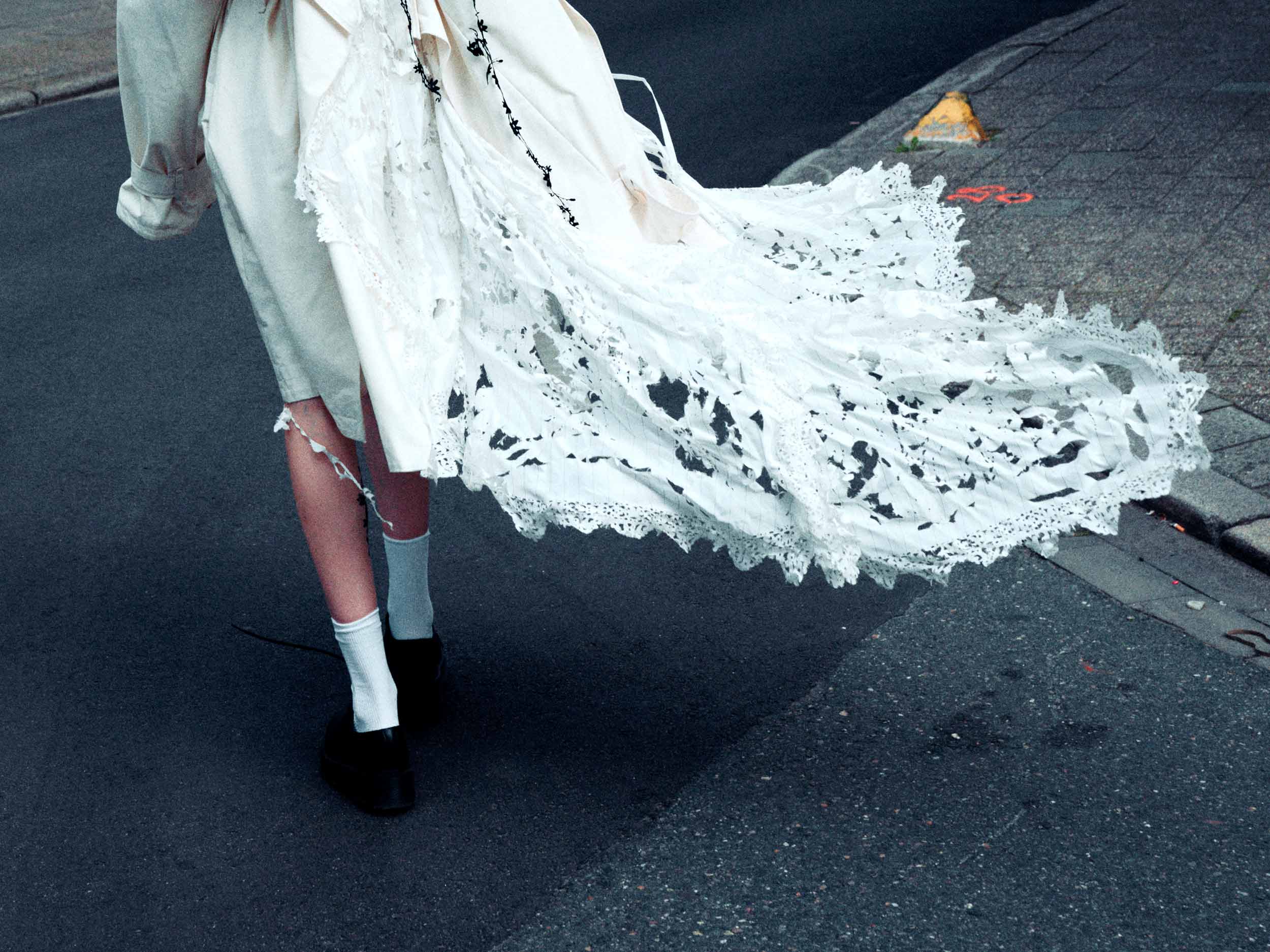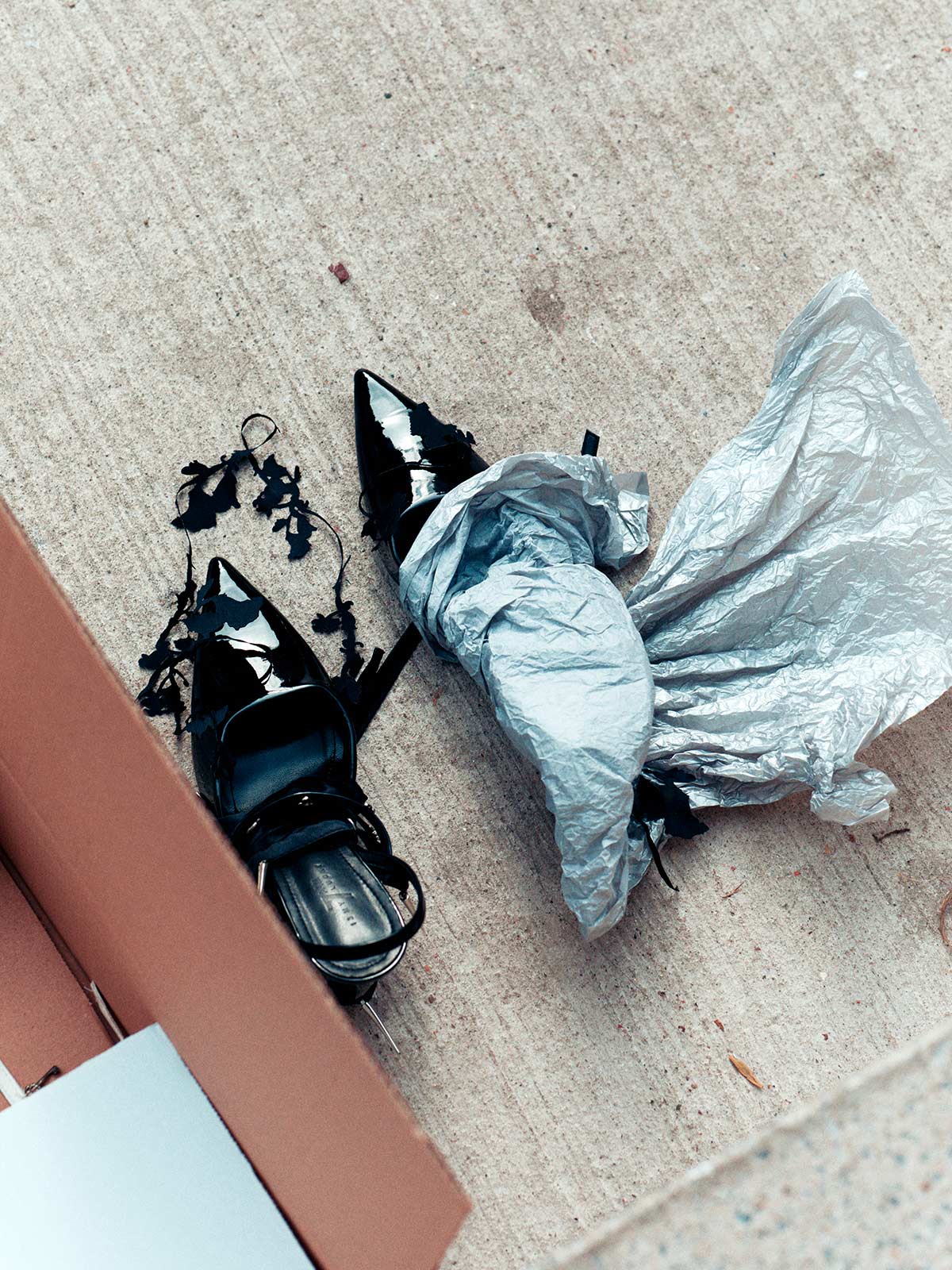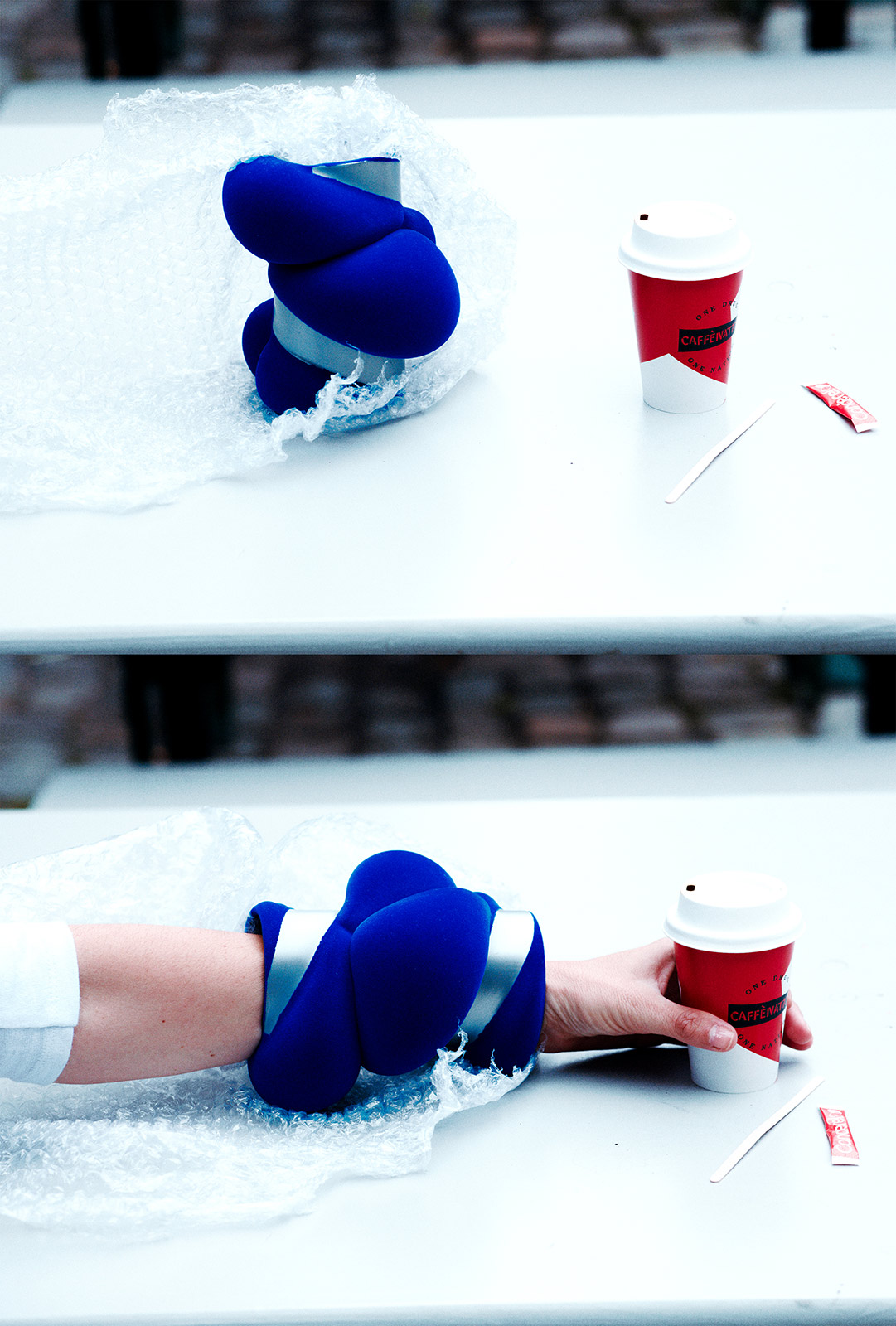Document asks 5 recent fashion graduates about ritual, inspiration, and the stories that undergird their latest collections
Antwerp’s reputation as a birthplace for sartorial tastemakers is unparalleled. The explosion of the Antwerp Six in the early ’80s—which included designers Ann Demeulemeester, Dries Van Noten, and Walter Van Beirendonck—signaled that the Royal Academy of Fine Arts was an incubator for innovative fashion talent. Given the group’s lasting impact on the likes of Raf Simons and Demna, it is no wonder that the fashion world remains tuned in to the Belgian city.
Recent graduates from both the Royal Academy and La Cambre Mode[s] are poised to continue this legacy of cutting-edge clothing design. Whether inspired by spontaneous sketches on cheap paper or passing strangers, these emerging designers employ a perspective unique to Antwerp to push the bounds of style.
No two are aesthetically similar—Victoria’s Lebrun CARRÉMENT! plays with saturated colors and voluminous designs, while Romain Bichot’s Call Me If You Get Lost centers the act of walking at night—its dangers and excitements—as his collection’s theme. Each artist pulls from a deep pool of references; mentions of architecture, drawing, and sculpture abound across how they envision making clothes. Here, Document uncovers Antwerp’s casual magic, which each designer seeks to capture.
Cezary Zalit
Document Journal: What’s the story behind your collection, and what tools did you use to tell it?
Cezary Zalit: The collection started from a single word—sonder, the realization that people and surroundings [move] on their own, [separate from your life]. I focused on that split-second image of your surroundings, and how that memory is processed as a vague composite of textures, shapes, and details. The garments in the collection are structured with a specific point of view, as if the whole information about the scene [appeared at that] particular angle of the silhouette. Blending the layers of misplaced garments, merging background textures into a form of an imprint—almost as if surroundings become an invasive space.
Document: How far back can you trace your love of design?
Cezary: My interest in the design umbrella started relatively early on, but at the time, it was more focused on graphics and architecture. Around high school, I started to shift my interest to fashion design. I think it mostly came from my personal search for a creative field that could combine a little bit of every other design path to produce a harmonious product.
Document: Any rituals that aid your creative process?
Cezary: My go-to prep before developing anything is to grab a stack of cheap paper and the most basic office-grade pens. I just start filling up pages with shapes, shadows, forms without any planning.
Document: How would you characterize your city’s sense of style?
Cezary: Antwerp’s style presents itself best when you don’t look for it. Self-expression is more casual—you can be on your way to do some morning errands and cross paths with the most interesting people doing mundane things.
Jill She
Document Journal: What’s the story behind your collection, and what tools did you use to tell it?
Jill She: This collection tells the story of breaking the overly rational order of society. I use voluminous padded shapes and extremely [shrunk] fabrics to express this contradictory sense of confinement and liberation—the tension between comfort and aggression.
Document: The most important lesson you’ve learned about design?
Jill: It’s more important to start making clothes than to sit at the table and think about it.
Document: What are the techniques and materials your work couldn’t exist without?
Jill: I have always liked to study the spatial structure of design. I like to think about my work as a sculpture, so zippers have become one of the obvious elements in my [work].
Aaron Hüttenmeister
Document Journal: What’s the story behind your collection, and what tools did you use to tell it?
Aaron Hüttenmeister: My collection was initially inspired by [perfume] bottles and the beauty surrounding them. I like the strictness and elegance that the proportions and materiality carry. Applying that to the body became an exercise in cutting: By creating a system of flatness based on the proportions of the bottles, [I created] garments that [broach] conversation with the wearer. [They] almost shape themselves.
Document: Where does Antwerp’s influence show up in your work?
Aaron: The way of looking at garments [to understand] what clothing means, and then subverting that. Abstracting an idea, playing with color, heavily persona-based research: an analog approach with taste as a main component.
Document: How would you characterize your city’s sense of style?
Aaron: Versatile, never obvious, clever, individual.
Victoria Lebrun
Document Journal: What’s the story behind your collection, and what tools did you use to tell it?
Victoria Lebrun: CARRÉMENT! explores the interplay between 2D and 3D in fashion graphic representations—-it’s an invitation to wander into an abstract, colorful world of glossy paper. Inspired by artists like Anne Truitt and Erwin Wurm, I employ color-blocking to create impactful minimalist silhouettes. My concept emphasizes image manipulation, such as cutting and pasting, or reducing and enlarging proportions. Playing with images in magazines, drawing on them and cutting out the pages, was my first interaction with fashion. This collection is a tribute to [that].
Document: What are the techniques and materials your work couldn’t exist without?
Victoria: My work could not exist without the intense color composition research I [use to] lead my design process. Draping elements are also very important to my creations as part of a constant search for movement and dynamism.
Document: The most important lesson you’ve learned about design?
Victoria: The most simple designs are the most difficult to achieve.
Romain Bichot
Document Journal: What’s the story behind your collection, and what tools did you use to tell it?
Romain Bichot: Call Me If You Get Lost is a nighttime city stroll, all about fading into the environment. My collection is a reflection of the body becoming an everyday, common object blending in and protecting itself.
Document: How far back can you trace your love of design?
Romain: I started out in the theater as a child, and that was my first relationship with clothes. I have always been drawn to the sense of drama that garments can carry. Approaching clothing as a story… Not as a product, but as a social disguise—a second skin.
Document: Any rituals that aid your creative process?
Romain: A magic cauldron, three chicken feet, and a Celtic grimoire.
Document: What’s your greatest ambition as a designer?
Romain: Sailing full-speed on a yacht in Madagascar alongside Amanda Lepore, watching the sunset with a dry martini in hand, and scribbling the next pre-collection on the corner of an old napkin.
Models Maud Van Dievoet, Gosia, Lennie Blockmans, Lucie, Guillaume, Julia. Make-up Laura Noben. Hair Laura Noben.





































